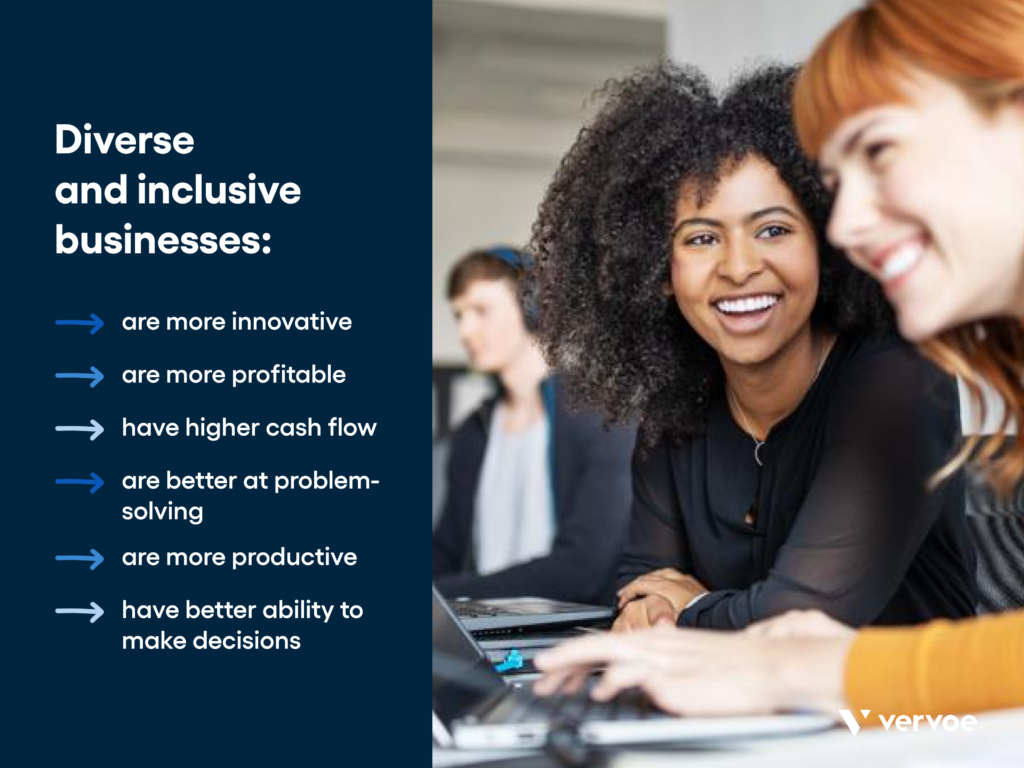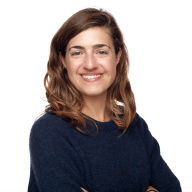Many organizations and leaders focus on the business case for improving diversity in the workplace. It’s true that diverse companies are ultimately more innovative, profitable, and productive.
However, diversity isn’t a silver bullet that can help you outperform your competitors. The employees — and consumers — of tomorrow expect companies to have a comprehensive, thoughtful approach to creating an inclusive work culture for individuals from every walk of life. The benefits of diversity in the workplace are far more profound than a healthy profit margin.
[Read more: The Ultimate Guide To Diversity Hiring In 2021]
Why does diversity matter?
Diversity and inclusion are more than just trendy buzzwords. For the next generation of employees (and leaders), that a company would hire diverse employees seems like it should be a given.
“For Gen Z, racial, sexual, and gender equality isn’t an idea but a reality. They’re a remarkably diverse cohort, on track to be the last in America with a Caucasian majority,” explains one in-depth report by Vision Critical. “As kids of the Obama presidency and the Clinton candidacy, they’ve never lived through a time when people of either gender or any racial background couldn’t become President. They support same-sex marriage—in fact, they don’t see why it would be controversial.”
“Diversity” for the next generation of employees and consumers refers to more than just race and ethnicity. It refers to workplace culture(s) that embrace a range of skills and experience, are gender diverse (and know what that truly means), and make inclusivity the norm, rather than the goal.
Employers hoping to continue hiring talent over the next decade recognize that the benefits of diversity and inclusion in the workplace extend far beyond the financial bottom line. Brand loyalty, employee loyalty, and a company’s public reputation depend on the depth and credibility of its commitment to diversity and inclusion.
How diversity can improve the workplace?
Diversity is the starting point for creating a more vibrant, productive, and inclusive workplace. When you invite people from different backgrounds and perspectives to collaborate, you can begin to foster an environment where new ideas and ways of thinking are valued.
However, diversity can improve the workplace only when paired with an inclusive work environment. Inclusion is a measure of how supported or empowered each member of a diverse group of individuals feels.
With the right inclusive culture in place, research shows that diverse teams are better at problem-solving and decision-making. Employees perform better in a diverse workplace culture: research also indicates that homogenous cultures can stifle natural cognitive diversity.
An inclusive culture makes the company not only a great place to work, but also beloved by consumers. Some of the most diverse companies aren’t only successful in their industry; they also score highly on employee engagement, brand loyalty, innovation, and Net Promoter Scores.

Benefits and challenges of diversity
Diversity clearly can make a big difference, but the benefits of diversity and inclusion in the workplace don’t come without their challenges. Diversity in the workplace statistics show that diversity at work isn’t just a moral imperative — it’s good for business, too.
Benefits of diversity in the workplace
Diverse and inclusive businesses are more innovative, more profitable, have higher cash flow, are better at problem-solving, are more productive, and have better ability to make decisions than their more homogenous counterparts. Here are six key benefits of diversity in the workplace.

Gain new perspectives
When you increase diversity at your company, you’re able to bring in individuals with different backgrounds, experiences, skills and perspectives. These varied points of view offer the opportunity for better problem-solving, increased creativity, and fresh thinking. Ideally, you’ll bring in diverse candidates who don’t only look different but think differently too.
Improve innovation
Companies with diverse workforces tend to be more innovative, research shows. People who all come from the same background and have the same set of experiences will all have similar approaches to solving problems. Unfortunately, in-the-box thinking doesn’t lead to out-of-the-box product ideas. Mixing perspectives and life experiences can lead to real innovation.
More engaged employees
Employee performance dramatically increases when an office becomes more diverse and inclusive. Deloitte research found that “When employees think their organization is committed to, and supportive of diversity and they feel included, employees report better business performance in terms of ability to innovate, (83% uplift) responsiveness to changing customer needs (31% uplift) and team collaboration (42% uplift).”
In short: employees are more engaged, productive and motivated when they feel like their diverse and unique needs are being met by the organization.
Better decision-making
“Cognitively diverse” teams are better at solving problems and making decisions, shows research from Harvard Business Review.
“Cognitive diversity has been defined as differences in perspective or information processing styles. It is not predicted by factors such as gender, ethnicity, or age. Here we are interested in a specific aspect of cognitive diversity: how individuals think about and engage with new, uncertain, and complex situations,” wrote HBR.
Diverse hiring and unconscious bias training can help improve cognitive diversity and create the inclusive environment needed to foster better decision-making.
Increased profits
And, yes there is a business case to be made for increased diversity. McKinsey found that businesses with more racially and ethnically diverse workforces have a 35% performance advantage over those with a lack of diversity. Companies in the top 25% for ethnic and cultural diversity were 36% more profitable than those in the bottom 25%.
Great brand affinity
More than 70% of customers prefer to buy from a brand that aligns with their values. Today’s customers are savvy enough to see beyond glossy marketing campaigns: when a company truly stands for diversity and inclusion, it’s evident in its hiring, company culture, employer branding, and more. Millennials and Gen Z are paying attention when the employee experience doesn’t match with the company’s advertising. Brands that live and breathe diversity will have higher customer/brand affinity than those that do diversity inauthentically.
The benefits of diversity in the workplace, however, don’t start until a thoughtful, structural approach to support diverse employees is implemented. Companies that strategize in one area — diversity hiring — but fail to build the work environment to include diverse employees will face many challenges.
Challenges of diversity in the workplace
While the positive impact of diversity in the workplace is well documented, companies still struggle to get it right. It’s not just that hidden biases make it difficult to implement stronger diversity hiring practices; it’s also that many business leaders misunderstand what it takes to get diversity hiring right.
“Increasing the numbers of traditionally underrepresented people in your workforce does not automatically produce benefits,” explained Harvard Business Review. “Taking an ‘add diversity and stir’ approach, while business continues as usual, will not spur leaps in your firm’s effectiveness or financial performance.”
If you are struggling to retain diverse hires, the issue may lie in your organizational culture. Inclusion can be measured through exit interviews and employee surveys. Read more in our guide, How To Measure Diversity, Equity And Inclusion.
How do you accept diversity?
If you’re not sure how to get started with diversity and inclusion at your organization, there are tools that can help. AI diversity and inclusion software for recruiting can help you strengthen the diversity of candidates in your hiring pipeline. Skill tests like Vervoe give companies a way to hire based on merit: job seekers are assessed based on their potential (what they can do), and not at what country, school, or company they come from.
[Read more: Skill Tests: Complete Guide To Assessments + Examples]
Offering a fair assessment to every candidate is one of the first ways to begin accepting diversity at your business. Organizations also need diversity training, buy-in from leadership, mentorship opportunities and ERGs, and open and transparent communication to support diverse candidates. A good place to start for organizations seeking to improve diversity is with a DE&I statement. Learn how to support candidates as they enter your organization and grow with your business in our Ultimate Guide To Diversity Hiring In 2021.




















